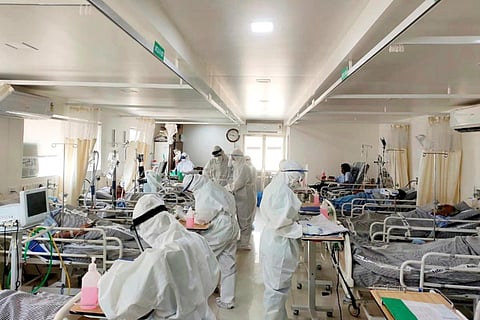Black fungus and COVID-19: What to look out for
When 48-year-old Pavan (name changed), who has diabetes, contracted COVID-19, he like many others was treated with steroids and hospital care. It was relatively seamless and he was discharged and advised on post COVID-19 recovery care. It was then that the nightmare began for him and his family. A persistent facial pain made him seek a medical consultation where the new dreaded diagnosis of Mucormycosis was made. A radical surgery was performed to remove most of the infection from his face. He is now in the recovery phase and taking medication to reduce the rest of his infection. After many apprehensive days, which involved struggling to get the now scarce antifungal medications coupled with a very expensive treatment — running into lakhs of rupees just for the medications — his son insists that it was the early diagnosis that saved his father.
As hospitals are battling a severe second wave of coronavirus, a rare fungal infection has spread around us quietly. Cases of Mucormycosis, commonly known as black fungus, are seeing a rise not just in metros but in tier 2 and tier 3 cities too, where medical resources are often not readily available. Molds called Mucormycetes, which are found in the environment commonly, cause black fungus and can be very fatal in individuals with weakened immune systems.
So, who is at risk?
Patients who have COVID-19 and those recovered from it, usually between 2-6 weeks following detection of COVID-19, who also have:
- Diabetes, usually uncontrolled diabetes.
- Been prescribed steroids for treatment or on any immunomodulatory medications.
- Needed mechanical ventilation or oxygen therapy for long duration.
- Cancer and organ transplants.
Some of the common symptoms, which should alert the patient to seek medical help without any delay are: persistent facial pain, stuffy nose, nasal discharge often blood tinged, pain and swelling around eyes, change in colour of the face, toothache, loosening of tooth, chest pain and fevers, worsening respiratory symptoms, and lastly a decrease in vision or blindness.
Due to the aggressive nature of the infection, it often requires a very early diagnosis and a multi-disciplinary team of doctors, involving specialised surgeons from ENT, Maxillofacial and Ocular departments along with physicians, treating it. As often is the case, these resources are commonly available at major cities and towns only.
Raghu (name changed), a 31-year-old with diabetes realised he needed medical help and went to a nearby town, the infection had made it difficult for him to open his mouth completely or to even speak. He is now in recovery following a complicated surgery. Some others like him are unfortunately not that lucky.
Most of the time, a typical course of antifungal medication is prescribed, which would last six weeks, occasionally may take months too.
Views expressed are the authors’ own.
Dr Mahishma K is Consultant Paediatrician & Assistant Professor (Paediatrics) at Shadan Medical College in Hyderabad and Dr B Manasa is a Family Physician at Apollo Clinics in Hyderabad.

